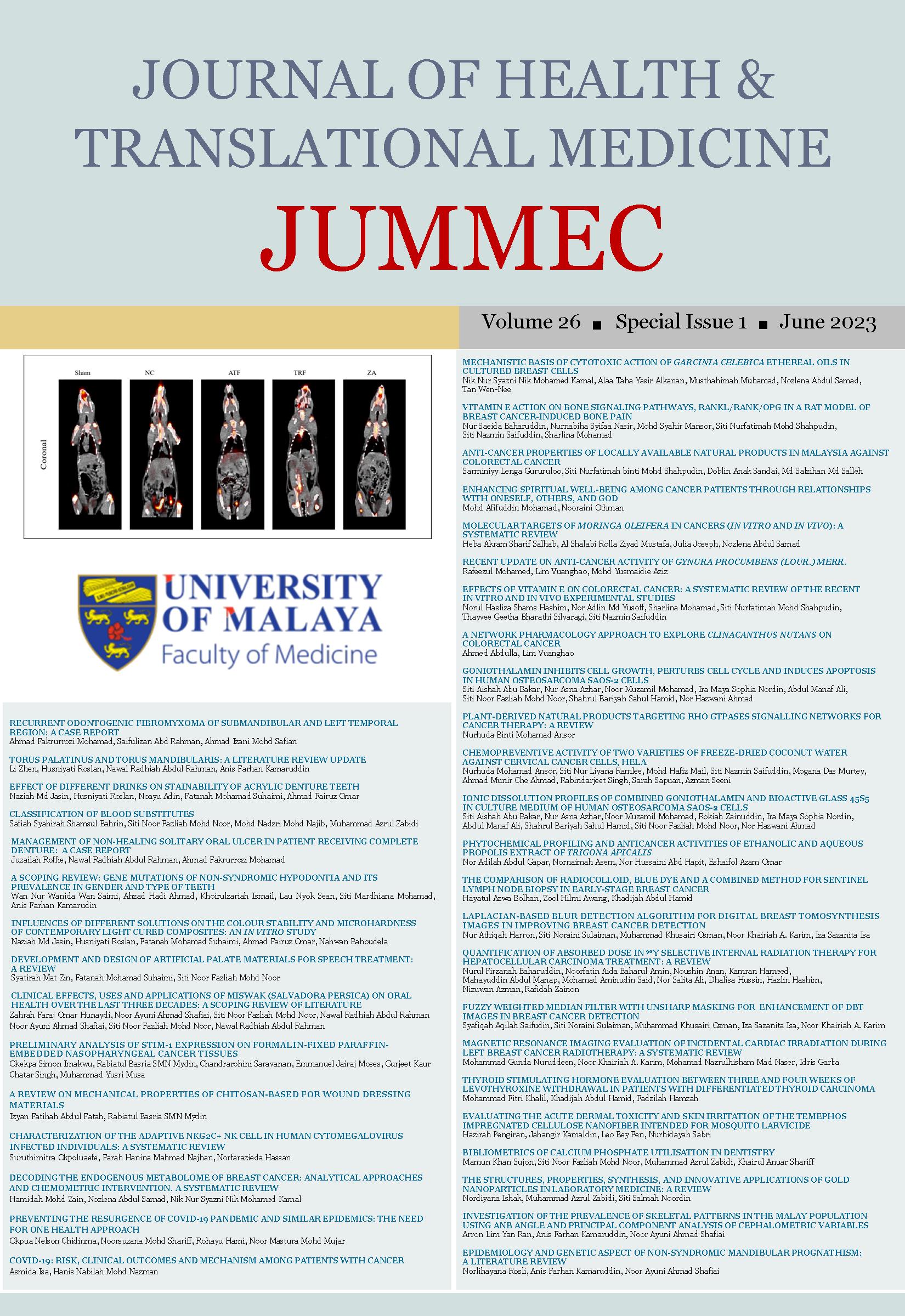INVESTIGATION OF THE PREVALENCE OF SKELETAL PATTERNS IN THE MALAY POPULATION USING ANB ANGLE AND PRINCIPAL COMPONENT ANALYSIS OF CEPHALOMETRIC VARIABLES
Received 2022-12-11; Accepted 2023-02-20; Published 2023-06-06
DOI:
https://doi.org/10.22452/jummec.sp2023no1.23Abstract
Prevalence studies of malocclusion should distinguish how skeletal classification was done because of the moderate correlation that exists between dental arches and skeletal patterns. The validity of using the ANB angle as a diagnostic tool to determine skeletal patterns remains questionable. This study aimed to determine the prevalence of skeletal patterns in the Malay population, their association with gender and age groups, and whether the ANB angle is a highly correlated variable in diagnosing skeletal patterns radiographically by using Principal Component Analysis (PCA). Two thousand one hundred eighty-two lateral cephalograms of Malay patients were digitally traced. Respective skeletal patterns were determined using the ANB angles. Descriptive analysis was used to describe the prevalence, whereas the association with gender and age groups were determined using the Chi-Squared and Fisher's Exact tests. PCA was done on all commonly used cephalometric variables in Class III samples. The prevalence for the Class I, Class II and Class III skeletal patterns were 41.3%, 46.1%, and 12.6%, respectively. A significant association was found between gender and skeletal patterns (p = 0.012). Most of the significant variables in principal component (PC) 1 were vertical measurements. ANB angle was not captured in the first five PCs. Class III skeletal pattern was significantly less prevalent in the Malay population when compared to other skeletal patterns, especially in males. Vertical, sagittal cephalometric measurements and incisor angulation variables were more highly correlated than the ANB angle and, therefore, may be more useful to diagnose the Class III skeletal pattern.
Downloads
Downloads
Published
Issue
Section
License
All authors agree that the article, if editorially accepted for publication, shall be licensed under the Creative Commons Attribution License 4.0 to allow others to freely access, copy and use research provided the author is correctly attributed, unless otherwise stated. All articles are available online without charge or other barriers to access. However, anyone wishing to reproduce large quantities of an article (250+) should inform the publisher. Any opinion expressed in the articles are those of the authors and do not reflect that of the University of Malaya, 50603 Kuala Lumpur, Malaysia.


